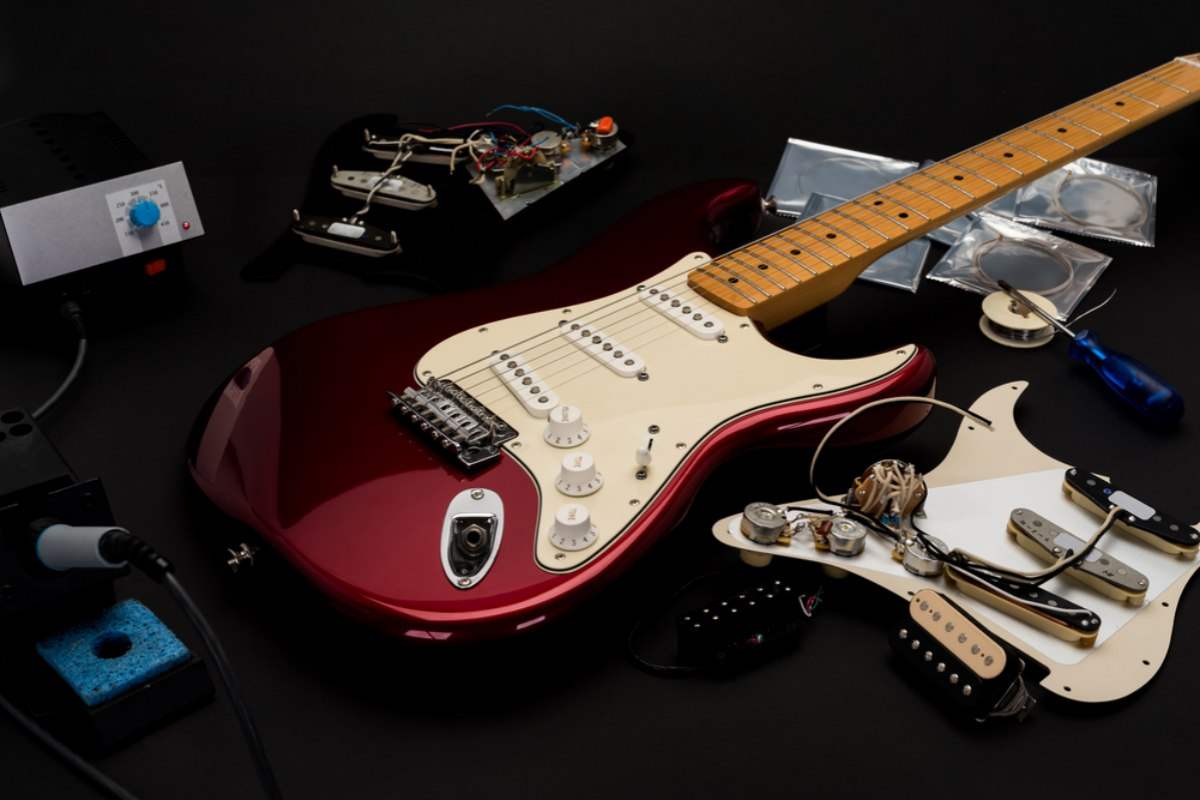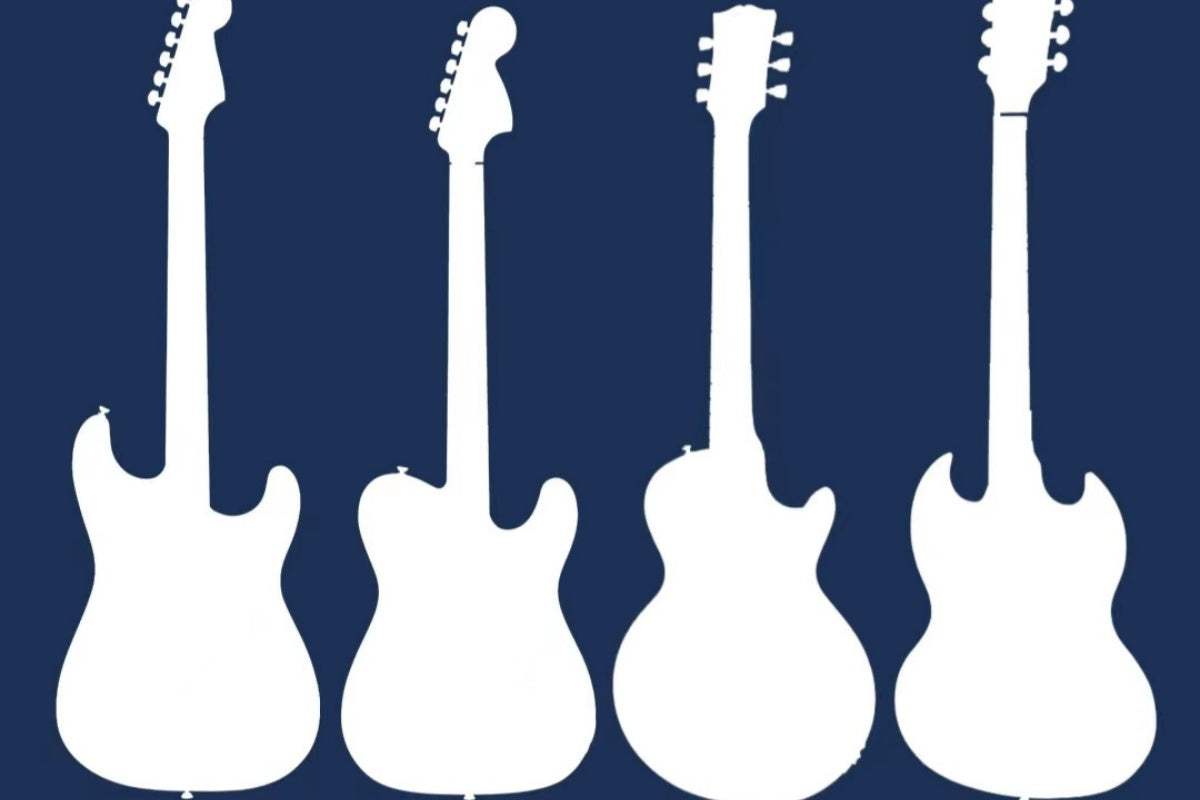Removing, cleaning, and installing replacement guitar tuning machines is a routine process for most guitar players. Pegs corrode and lose efficiency over time, so that might be the reason if you’ve been wondering why your guitar won’t stay in tune for more than a few hours. Have you ever got a new set of tuning machines yet?
Installing machine heads may only appear as an intimidating task for beginners, but in reality, it takes very little time, effort, and know-how to complete. We’re here to help you learn how tuning machines work, how to remove & install them, and what to look for if you’re eyeing an upgrade.
What Do the Tuning Keys on a Guitar Do?
First things first, guitar tuning knobs have two purposes - one revolves around tightening or loosening the strings, and the other is keeping the strings in place so that they don’t stretch while you’re playing.
Each knob has control over a single string, which is why there are typically six of them located on the headstock of most guitars. Depending on the guitar model, pegs may be placed as six in a straight line, or three on each side (more common for acoustic guitars).
How to Install Tuning Machines: Step-by-Step Guide
Step 1: Determine Your Guitar’s Machine Head Layout
You should first look for the exact position of the screw holes on the headstock of your guitar. This is sometimes referred to as the “mounting point” and is an essential piece of information you’ll need to find heads that match your guitar’s specs.
Look for the angle the position of the screw is making against the peg post. Some sit at a 45-degree angle, others at 90 while there are machine head sets with multiple (usually horizontal) mounting points.
For instance, a vintage Fender may have ample spacing between each head, allowing you to flexibly choose replacements, even if you can’t determine the angle of the mounting point.

(Optional) Step 2: Buy Adequate Replacement Tuning Pegs
Skip this step if you already have a set of replacement machine heads that can properly fit your guitar’s headstock. It’s important to note that machine heads aren’t universal in size, so every piece of hardware needs to snugly fit and not be forced to avoid damaging the guitar.
Typically, peg holes are either 8.8 or 10mm in diameter. If your guitar has the former, you’ll need machine heads with push-in bushings, and if not, grab a set with screw-in bushings.
Step 3: Remove Strings from Pegs
Use the existing knobs on your guitar to loosen all strings and ultimately remove them from your guitar.
In case the pegs aren’t working, you may need to cut the strings. This is a simple yet crucial step because the strings are attached to your current guitar pegs, and you won’t be able to install replacements with them in the way.
Step 4: Remove the Nuts of the Tuners
You can use adjustable wrenches or nut removal tools to detach the nuts from your guitar’s headstock. Be extra gentle when doing so, especially if you’re doing it for the first time to avoid unnecessary damage to the wood.
After removing the nuts, you’ll also have to detach the underlying hardware pieces, including the bushings and the sealing caps.

Step 5: Detach the Screws
Flip your guitar so that its headstock is facing away from you to reveal its screws. The position and type of screws holding the pegs in place may vary depending on the machine head’s type, but they should always be visible to the naked eye.
Unscrew and remove one peg at a time. With the screws gone, the heads should be easy to pull out by hand.
Step 6: Insert New Tuning Pegs
From this step onward, all you’ll need to do is essentially do everything so far, but in reverse. Place the new machine heads into your guitar’s headstock, and if you followed our guide, the heads should properly fit, and their screw holes should sit directly above the mounting points.
Step 7: Place Sealing Caps and Bushings on the Posts
If the hardware of your old tuning pegs is in good condition, you can “borrow” the caps and bushings and simply place them on each post of your new tuning machines.
Most replacement sets come with accompanying hardware, but we like to have at least a dozen screws, bushes, and sealing caps just in case (these parts are generally flimsier and cheaper than the nuts).
Step 8: Tighten the Nuts
When you removed your old machine heads, you may have noticed scratch marks or degradation on the wood around some of the posts. This is a clear indicator that certain pegs were tightened a bit too much, so don’t repeat the mistake of whoever installed your previous machine heads.
The nut should firmly press the sealing cap, but not to the point that it would be impossible to remove it by hand.
Step 9: Install Screws in New Pegs
Once again, flip your guitar with the headstock facing outward, and look for the mounting points. Place screws in each and tighten them. The pegs should be able to hold on their own, but it’s not a problem even if they’re wiggling a bit.
FAQs About Guitar Tuning Machines
How to replace tuning pegs?
Remove the old guitar tuners, place the tuning machines into the holes on your guitar’s headstock, place the sealing caps and bushings over each post, and finally, place and tighten the nut above each peg to keep them in place.
How to tighten tuning pegs?
Tuning pegs can be tightened in two ways. You can tighten the screw on the mounting points (guitar headstock’s back), or you can tighten the nut (on the front). Ideally, combine these two methods in equal measure for optimal results but always leave a bit of breathing room for your guitar tuning machines.
If you like this article, please share it!
Be sure to join our FB Group Guyker Guitar Parts & Accessories Community to share your ideas! You can also have connections with like-minded guitar players, Guyker updates as well as discounts information from our FB Group.





